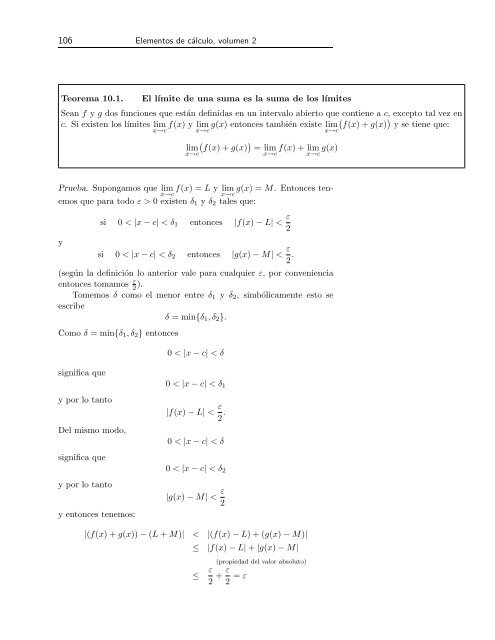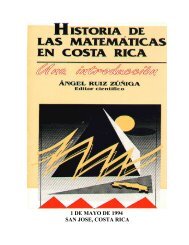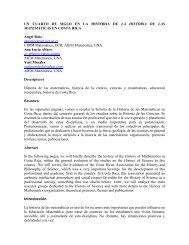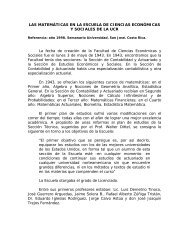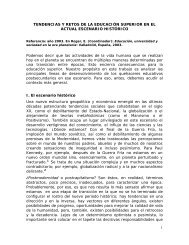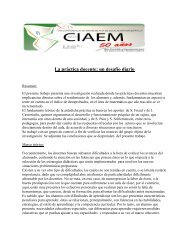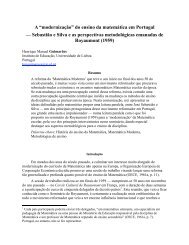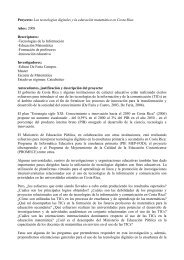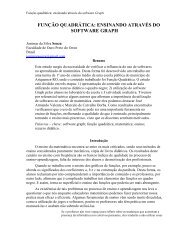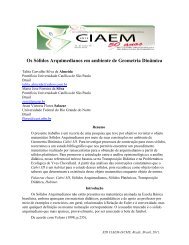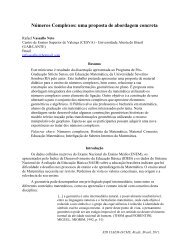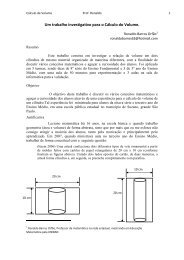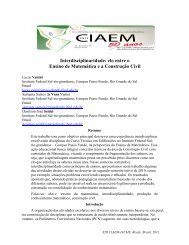Vol2 Derivadas, aplicaciones y temas especiales - CIMM
Vol2 Derivadas, aplicaciones y temas especiales - CIMM
Vol2 Derivadas, aplicaciones y temas especiales - CIMM
Create successful ePaper yourself
Turn your PDF publications into a flip-book with our unique Google optimized e-Paper software.
106 Elementos de cálculo, volumen 2<br />
Teorema 10.1. El límite de una suma es la suma de los límites<br />
Sean f y g dos funciones que están definidas en un intervalo abierto que<br />
<br />
contiene a c,<br />
<br />
excepto tal vez en<br />
f(x) + g(x) y se tiene que:<br />
c. Si existen los límites lim<br />
x→c f(x) y lim<br />
x→c g(x) entonces también existe lim<br />
x→c<br />
lim<br />
x→c<br />
f(x) + g(x) = lim<br />
x→c f(x) + lim<br />
x→c g(x)<br />
Prueba. Supongamos que lim f(x) = L y lim g(x) = M. Entonces ten-<br />
x→c x→c<br />
emos que para todo ε > 0 existen δ1 y δ2 tales que:<br />
y<br />
si 0 < |x − c| < δ1 entonces |f(x) − L| < ε<br />
2<br />
si 0 < |x − c| < δ2 entonces |g(x) − M| < ε<br />
2 .<br />
(según la definición lo anterior vale para cualquier ε, por conveniencia<br />
entonces tomamos ε<br />
2 ).<br />
Tomemos δ como el menor entre δ1 y δ2, simbólicamente esto se<br />
escribe<br />
δ = min{δ1, δ2}.<br />
Como δ = min{δ1, δ2} entonces<br />
significa que<br />
y por lo tanto<br />
Del mismo modo,<br />
significa que<br />
y por lo tanto<br />
y entonces tenemos:<br />
0 < |x − c| < δ<br />
0 < |x − c| < δ1<br />
|f(x) − L| < ε<br />
2 .<br />
0 < |x − c| < δ<br />
0 < |x − c| < δ2<br />
|g(x) − M| < ε<br />
2<br />
|(f(x) + g(x)) − (L + M)| < |(f(x) − L) + (g(x) − M)|<br />
≤ |f(x) − L| + |g(x) − M|<br />
(propiedad del valor absoluto)<br />
≤ ε ε<br />
+ = ε<br />
2 2


